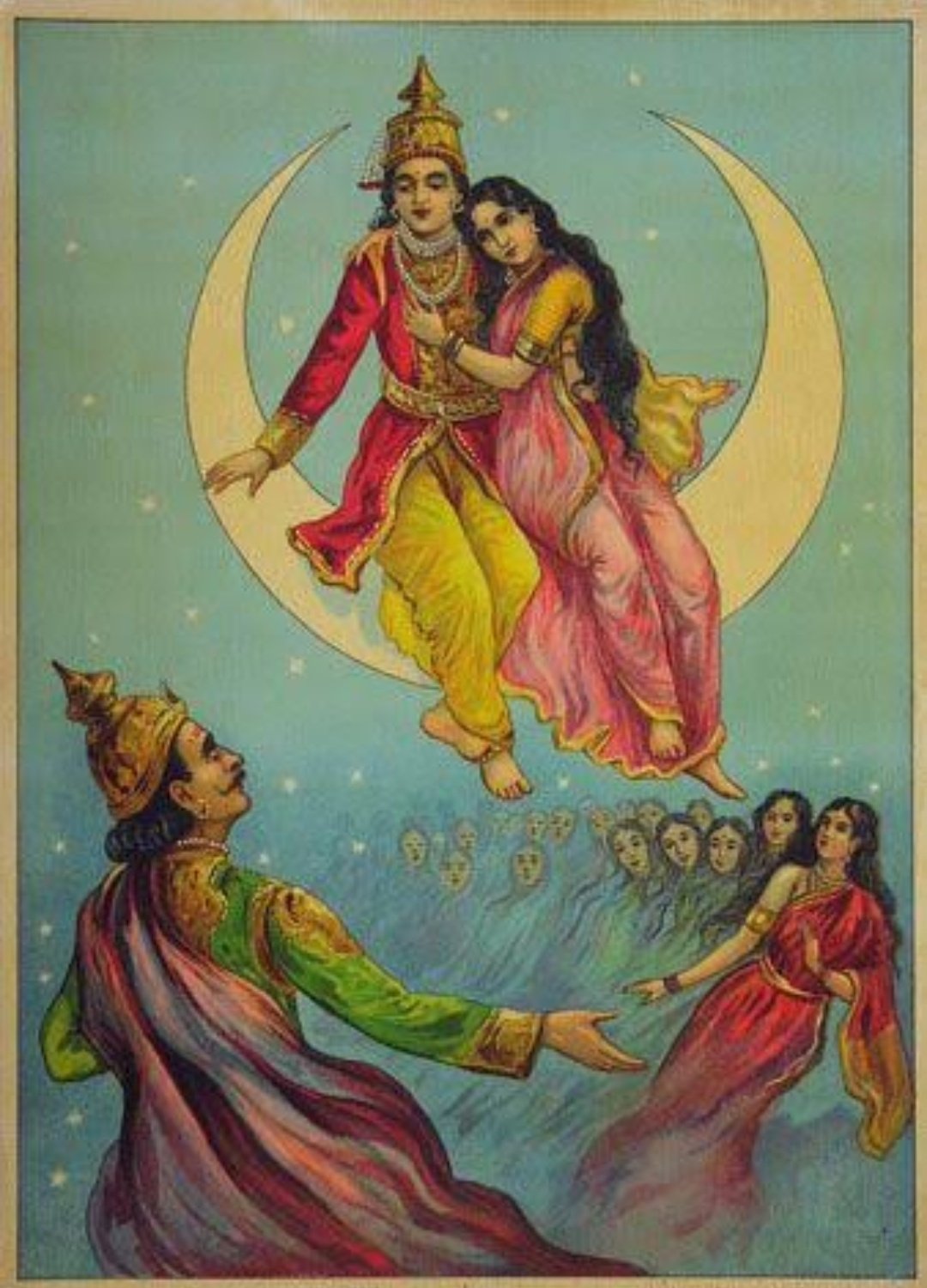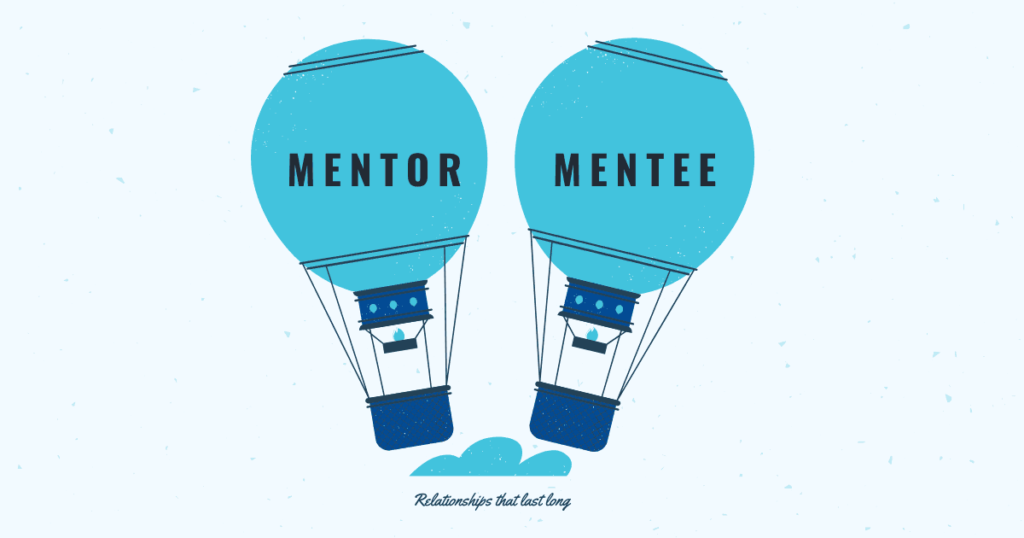VOLUME XI – CHAPTER 3
THE TRENDSETTER

Knowing, Doing and Being are three important aspects of Principalship – you should know your work well – what you should and what you should not- know the job’s alphabet A to Z. This you can acquire by extensive reading and intensive observation of seniors at work. Next, you must start activising the knowledge you have gathered- putting it into practice. All that you have learned in your B.Ed., or M. Ed., course was not just to help you clear the examination. Every theory you have learned should be applied to the classroom. This is doing, next and finally, you become and then be.
Like Government bonds and wine, teachers also need and take time to mature. Through the years of your pedagogical journey, you would have faced high and low tides, troughs, rapids, swirling currents, typhoons, and hurricanes. The sober, the solemn, the sly and the sludge, the intelligent, the clever, the crafty, and the cunning- interactions with all these types of persons would have rounded your corners, shaped and moulded you. When the author started his career as an untrained graduate assistant on 28 August 1951 in the board high school, Cheyyar, North Arcot District of Tamil Nadu, he felt he had got a job. In 1955, when he was appointed as a Lecturer in the Teacher’s College of Sri Ramakrishna Mission Vidyalaya, Coimbatore, he felt he had been given an opportunity to do a higher level of work – a position ( in teaching) – teaching teachers. Then, in 1962 when he was appointed as Deputy Director, Training, South Zone, in the Ministry of Community Development, Govt. of India he felt had been accorded a status. Then, after retirement in 1992, when he was requested by some schools to be their Educational Advisor, he felt he had gained- a stature – after a pedagogical journey of 41 years. This is the stage of being.
Teaching the same lesson in the same way, year after year- you are only aging but not becoming old hand. Year after year you have to Rethink, Rejig, and Recreate your teaching process even if it is the same lesson, and thereby make the students look forward to your class. Otherwise, your reputation as a repeater will travel before your first class for the year. The seniors will tell the juniors what to expect to hear in your class. Then when you enter the class, it becomes secondhand. Interest wanes and indifference set in.
Mrs. G. Malaiamal, PGT Bio. and Mrs. Abdullah, Primary teacher at K.V. Coimbatore, Mr. Narendran, TGT Science and Mr. Shankaran, TGT Social Studies, Mrs. Bhuvaneshwari, PRT at K. V. HVF, Avadi Chennai. Mrs. Christella, Mrs. Visalakshi, and Mrs. Shyamala, PRTs at KV AFS Avadi, Mrs. Fernandos, TGT, Eng, Mr. Paul, PGT, English at KV Cochin, Mrs. Amuda, Mrs. Thangam, Mrs. Latha Ramachandran, Mrs. Vasanthi Chari, PRT at KV IIT Chennai Mrs. Jayalakshmi at KV Ashok Nagar, Mrs. Lakshmi, PGT (His) and Mrs. Uma Sivaraman, PGT ( Eng). Mrs. Bhanumathi Govindarajan, TGT (Sci) Mrs. Chandrika Srinivasan, TGT (Eng) and Mr. Subramani, Librarian KV, Kalpakkam were all trendsetters.
Mr. N. Chinnaswami Naidu, H.M. Mani High School, Mr. E. Venkatesalu, HM Rajalakshmi Mills High School and Dr. S. S. Rajagopal. HM Sarvajana High School at Coimbatore, Mrs. K. Alamelu Principal, P. S. Sr. Sec. School and Sri. S. Natarajan, HM of St. Gabriels, Mrs. Saraswathi Srinivasan HM Rani Meyammal Girls School at Chennai were Trend Setters- Pace Setters, Trail Blazers.
ARE YOU DAKSHA OR SIVA

How can you become a trendsetter? There is a story in our mythology that Daksha Prajapati cursed his Son-in-law Moon to wane because of his over-affection and attention to only one of his 27 daughters whom he had given in marriage to him. Shocked by this moon ran to Shiva and sought refuge at his feet. Shiva took pity on the Moon and blessed him that he should wane for 15 days and again wax for 15 days in a month.
Like this, we have among Principals both Daksha Prajapathis who cause the staff to wane and wither and also Shivas who encourage the staff to wax and walk into fame. The trendsetter is a Shiva who helps the staff to grow to bloom and scale heights.
The trendsetter is one who is never tired of work. Work will never tire you. What tires you and causes tension is an oscillating mind, the mind that is not concentrated on work, the mind that jumps back and forth from what he has done to what he wants to do without caring to focus on the present which demands his attention and help him to achieve. The trendsetter knows that his future and that of his school will be the outcome of his present performance. His trend-setting depends on 3 factors.
He is fully focused on his present work
He fixes a target, a goal and strains himself to the fullest to reach it
He is self-less and quite resourceful
As Michael Porter of Harvard says, a trendsetter creates shared value. He sets his job not in economic terms but looks at it in learning lessons. Every position is a mythological gold container full of elixir. The container-the job gives us a designation to feel proud and a salary to take care of our family but the job has in it the potential, the opportunity to develop mentally, morally, and emotionally. We should allow the seed in the job to sprout. If we don’t see the seed, it is not the seed’s mistake.
The trendsetter knows the ‘Croesus Effect’ and its reverse mode– Croesus was the king of Libya between 560 BC and 540 BC. He did not mind spending any amount of money to reach his objective. His only question was “Are there solutions, means to attain this goal” – didn’t care about the cost of it. In one city, there were two principals who were ‘Croesus’. If one conducted an exhibition on the Annual day in a grand manner, the other one immediately told his staff ‘Ours must surpass that. Don’t worry about money. We shall use our resources to the hit”
But some Principals like the author understood the reverse mode of the “Croesus effect”. Their only question was “How to reach our objective with the least expenditure?
In 1969, the M.E.S gave a huge estimate to the author for getting the School grounds leveled so that a new building could be raised. Since the land belonged to the Air Force, KVS could not spend. As the land was not used by the Air Force, the audit said that the AF station could not incur any expenditure on that work. Then the author decided to touch the Goodness in people’s hearts.
The author discussed this with an Airforce Parent (Sqn,Ldr) who said, “Each officer can get 20 liters. You please ask the Adjutant, The Education officer, the two wing commanders, and finally the station commander. Following his advice, the author got 100 liters of diesel and got the whole school ground levelled with the help of one Director, CURDE who sent a bulldozer for that work.
The trendsetter always adopts the ‘Croesus Effect’ in reverse mode
The author was a witness to a beautiful motivation by Sri. C.A.S. Raghavan, Principal KV Kalpakkam during his inspection visit. During that period, a large number of turtles came to Kalpakkam to lay eggs. Many fishermen used to remove the eggs. Sri Raghavan told the students in the morning assembly:-
“Whales in large numbers came to Surat for delivery and feeding when the temperature there is 21º – 25º. But the local fishermen used to hunt them for meat and oil. Moran Bapu a spiritual guru of Gujarat asked the fishermen, do you kill your pregnant daughter who comes to her parent’s home for delivery
The fishermen in one voice said “No, “Moran Bapu asked them, then why do you kill whale sharks that travel 22400 km from Australia to your place for delivery and feeding”.
The fishermen said “Hereafter we will become Whale Na mitra – Friend and whale Na Veera – protector”
Mr. Raghavam asked the students to go to the fishermen’s huts, tell this story, and change their attitude. Thereafter, the turtle eggs were safe.
The trendsetter like the Principals / HM – of the past had certain core values/attitudes that guided their lives and work such as:-
- They did not monopolize success
- They loved learning and books
- They knew where they wanted to go and achieve
- Their faith in a superpower and in themselves gave them an inner strength.
- They understood that sustained hard work only will shower with success.
- They believed that achievement is not the result only of superior knowledge but more of perspiration.
- They knew that common sense was their best guide
- They were never complacent
- They never went after material rewards, awards, or honour
- They considered obstacles as opportunities and not as bottle-necks.
- They had a role model for them to start with. Later on, they themselves become role models.
- In their younger days they had taken part-time jobs. That experience made them independent and responsible and daring
- They were good in multi tasking
- Instead of thinking “What to do next”?. They always thought “What shall we be a decade from now”
- They considered developing people (staff) as important as achieving results”.
The trendsetter advises shares insights, discusses, and debates with his staff. Manu Anand, Chairman of PepsiCo India instructs and coaches them besides the above. At the same time, he has the humility to say, he learns “Functional expertise” from them.
Like Harish Narayanan, M.D. of Bausch, the trendsetter helps the staff formulate thoughts and creates collaborative networks within the school
Like Muktesh Pant, Founder CEO of Reebok India the Trend Setter treats his staff as he would treat his own children.
Harish Geonka, Chairman of RPG Enterprises listens, empathizes, influences rather than instructs.
Santrupt Misra, HR Director of Aditya Birla Groups says “There is a beauty and joy in touching peoples” live in ways we do not realize”.
Like Atul Singh, President and CEO of Coca-Cola India, he acts as a facilitator and sets them on the right path.
The Trend Setter produces an ‘IKEA’ effect. The Dutch furniture company sells furniture which can be self-assembled.
It implies that when we create something, where we invest our effort and attention, we get involved in the creation. So, when we start valuing their ideas, plans, programmes, activities projects thought of by the staff, they will be executed well by themselves.
Pills Burg (cake maker) once left out the dried eggs and asked women to add fresh ones along with milk and oil to mix. “ its sales zoomed up. This is called egg theory”. Don’t give a solved problem. The joy of solving is greater than joy of solving is greater than the joy of having solved the problem as Shakespeare said in ‘ Richard II’ “ to joy is better than to be enjoyed”. Striving is better than success. Traveling is better than arriving at the destination.
The Trendsetter lets people tell, tailor, create, and build something as Dan Airley Behaviourial economist puts it. He quotes the life of Edison who became obsessed with direct current. His disciple Telsa discovered alternating current which is more useful. Edison was keen to stop Telsa from growing and even secretly financed the building of an electric chair on principles. This was used first to execute William Kemler.
The trendsetter is not the one who creates something, falls in love with it, and becomes unwilling to listen to others.
The trendsetter is a greater listener. The trendsetter will not only create an idea but also develop people with imagination to spread the world around.
Jesus a trendsetter developed 12 disciples. Sri Ramakrishna Paramahamsa, India’s great secularist moulded 12 disciples.
Trendsetting is a skill that can be taught to anyone.
The trendsetter prefers to co-create with staff who self-select into the elite group by making specific commitments.
LEVERAGE THE UNIQUE QUALITIES

Saras D. Saraswathy of Darden School of Business, University of Virginia. U.S. A says to be a trendsetter you need to think effectively about leveraging the unique qualities that make you who you are and work with people who want to work with you. A trendsetter is one with whom people wish to work.
Trendsetters will not overload their staff with a lot of irrelevant information.
The author had the pleasure of observing a Principal who had a unique way of balancing the competing claims for the same assignment of two staff. Two experienced staff members wanted C.C.A (Co-curricular activities) to be allotted to them. The principal deftly solved the issue by asking the relatively C.C.A. for the year for classes 6-8 and the junior to assist him in the execution of the activities for classes of 9-11.
In this way, both were given parity in prominence and made to work as a team.
In the same way, when two staff wanted the examination work to be allotted to them, the principal made the relatively senior one perform the question paper setting work and invigilation duty schedule, and the other one to look into the implementation part – overseeing the conduct of the exams, receiving mark lists and cross-check of their corrections and check progress reports.
When the author asked him how he could arrive at this wonderful solution, he said a story from lord Krishna’s life gave him this idea. When Krishna brought the Parijatha tree from Indra, there was a dispute as to in whose house, – Rukmini or Sathyabhama, it should be planted. Krishna very cleverly solved the problem. Sathyabhama’s garden was located in the east. So the tree planted in Rukmani’s garden would grow towards the sun and so all the flowers would fall into Sathyabhama’s garden. Lord Krishna said “Rukmini takes all the trouble of tending the plant. So, the plant will blossom out when I am with her”, This story the Principal said gave him the idea of making both share the work.
The author had noticed that great Principals who were trendsetters had always
- Set their staff clear performance expectations
- Actively identified high flyers among the staff
- Prepared next-line leaders for transition
- Support new leaders to help them cope with the transition
- Develop potential leaders before their next promotion
The author had observed these being done,

Trendsetters are careful to look for petered-out staff, the plateaued staff, and those on the verge of burnout due to boredom of work are people who are so efficient in their teaching that the management does not want to promote them.
Sri Seshan, PGT Maths in Kalpakkam was an excellent Maths teacher.
Sir G. Balasubramaniam, PGT Chemistry in KV Trichy, was an excellent science teacher. Mrs. G. Krishnanand, then Assistant Commissioner KVS Madras region, did not want to lose them as teachers. But the author cautioned her that if they were not promoted as Principals KVS, would lose them. Within a year Seshan joined Atomic Energy Education Society as a Principal in one of their schools and Sri Balasubramaniam joined Hindu Senior Secondary School as Principal.
Sri Balakrishna Joshi HM of Hindu Theological High School, found that Sri S. Ramiah, PGT History had reached the maximum of his scale and could not hope to become HM of that School as there were many ahead of him. So he requested the author to help him get into KVS which he did. The author found that a fresh PGT got cent percent results on his subjects in the first three years of his service. This success goes to his head and in the fourth year, his complacency showed up in lesser percentage. The author asked the Assistant Commissioner to suggest to him that he should take his slide-down transfer to a school a little away as a challenge and take class IX and build that class in 4 years to an excellent level. She said this exercise will help in his future career development. This plan worked successfully and that batch benefited for 4 years by this expertise.
DEVELOP MENTOR-MENTEE RELATIONSHIP

A management that has a group of schools- private or Govt. like KVS or NVS can adopt with profit this “Shaded Programme” followed by Nokia- cell phone manufacturers, by seconding a person to a senior and asking him to observe him and learn the ropes. By this Nokia expects the chosen to live up to the four Nokia values –pave –passion for innovation; achieving together; very human and engaging you.
In 1980, the author introduced this “shadow principal” concept in KVS of Madras Region by which new Principals were required to “ professionally live” with a senior for a month, observe closely how he handled men and matters, situations – mundane, sublime, and crisis and submit a report. The senior also was asked to give a report. The ‘shadow principal’ sits with him in all discussions and meetings.
When the new principal takes charge of his school, after six months the senior principal goes there, sits with him for a week, observes how he runs the school, and gives useful and necessary suggestions.
This helped the new principal to understand the basics of Education management and for the senior, it was a recognition of his rich experience and expertise. A sort of mentor/ mentee relationship that continued to grow with time and this prepared the new principal to become a mentor, after some years to another fresher. The wheel moves on.
The trendsetter is not envious of others, he values trust. He keeps his ego in check. He puts a premium on human decency and not just on one’s mental acumen as Michael D. Esner says in his “ Working Together”, He masters and manages the challenge of innovation. He believes that one can create his “own luck” with good planning and preparation, remembering Louis Pasteur’s words, he is aware of the ideas and opportunities available beyond his realm of knowledge and range of experience. He makes the environment more participative. He triggers his colleagues to start thinking about new ideas and teaching modules. He develops their capabilities as well as capability. His success depends on his ability, charisma, and strength of character in dealing with men and moments.
The author could confidently and proudly say that he found all these qualities personified in Prof. G. Rajaram who was his second–in–command at the S. E. O’s training center where he was the Deputy Director during 1962 -66 in Sri Ramakrishna Mission Vidyalaya, Coimbatore.
Mrs. Saraswathi Srinivasan, Head Mistress of Rani Meiyammai Girls Higher Secondary School was a trendsetter who never underestimated herself and others and at the same never overestimated her contributions. Her value additions were visible in the high-end impact on her staff, adding value is no child’s play.
She started with performance improvement of individual staff by slowly changing their attitude, behaviour, and style. Then, gradually she created a talent mindset across the school. Then, finally, she could transform the whole staff into a powerhouse of learning and teaching. This was her real value addition.
C.Mahalingam V. P. of Symphony Services wants every trendsetter to remember the Chinese proverb:-
“The best time to plant a tree was 20 years ago and the next best time is now!”
A trendsetter like Sri E. Venkatesalu, H.M. of Rajalakshmi Mills school knew well that if he appreciates the viewpoint of other staff there will be a dialogue. Otherwise, only arguments will fly back and forth.
He developed a Healthy relationship based on Trust and respect with his Bosses (management) his peers (other Headmasters) and his juniors (staff)
What made him stand out was his open consultation attitude with his peers, his ability to collaborate positively with his staff, and his emotional quotient.
The trendsetter encourages “ submarines”- the staff who on their own ignites a spark, and try out something new without telling him, the author was privileged to work with such “submarines” like Dr. Mrs. Jagannnathan, Mr. S. R. Sankaran, Mr. S. Shanmugam, Mr. R. Udayamurthy, Dr. B. P. Sharma, Mrs. Neela Dorai, Mrs. Bhuvaneswari, Mrs. Padmini Joseph, Mrs. Fernandez, Mrs. Sharada Krishnamurthy, etc.
The author had seen a trendsetter in Mrs. Y. G. Parthasarathy, Dean, and Director of Padma Seshadri Bal Bhavan group of schools. She dares to dream, is prepared to take risks, does the right thing, understands the meaning of failure, and provides leadership. When she fails in anything she picks herself up and starts moving forward, she is always focused on the solution and not on the problem. The sheet anchors of her leadership are important values like integrity, respect for staff, expecting excellence, setting standards herself, and fine teamwork.
She introduced a program of training mothers ( at home ) in teaching and took them into her faculty later. She has started an outboard, adventure program in collaboration with the British Council. In Cooperation with the I.I.T. – Madras, she has started a research program for students. She receives students from U.S.A. on an exchange program. She provides her staff with opportunities to go abroad for visits/ studies. She has started a cultural wing under the banner “ Yuva Kalachar”
A trendsetter like Mrs. Lakshmi Swaminathan, Principal has been observed by the author to sit across with the colleague and say “These are the four areas I expect you to work on and this is what I expect from you or these are the aspects in your work that have not developed as they should have done”.
~~~~~
MAN alone can rise through effort to higher stages of spiritual evolution. No other animal can do so. Animal trainers of the Circus can train a tiger to perform various tricks, but they cannot change his nature. They cannot make it live on grass and completely deprive it of meat. But man is different. His nature can be changed by means of his own disciplined effort. He can control, by his will, the evil thoughts and ideas that arise in his mind. This is why birth as a human being is considered a rare gift. – Bhagawan Sri Sathya Sai Baba




